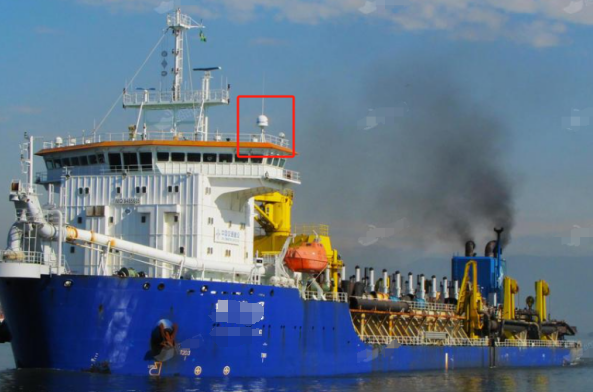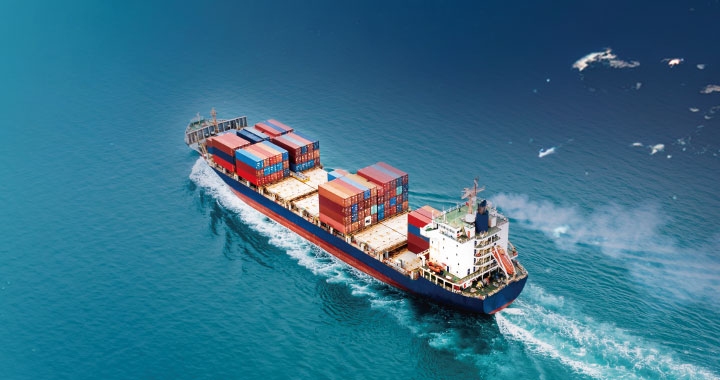VSAT Project for an Engineering Ship of CHEC Dredging Co.Ltd.
Access to information plays a vital role in the safe navigation and efficient operation of the ship. CHEC Dredging Co.Ltd. has deployed an advanced shipborne satellite communication system on its Ship XIN HAI FENG, successfully realizing a smooth connection between the ship and the land and opening a new chapter in the digitization of ocean shipping.
I. Challenges and Needs
With the traditional maritime communication mode, ships mainly rely on high-frequency (HF) radio and very high-frequency (VHF) radio for short-distance communication. However, these modes of communication are disadvantageous in unstable signals and limited bandwidth, which make it difficult to meet the diversified needs of the modern shipping industry for real-time data transmission, high-definition video conferencing, remote ship monitoring, and Internet access for crew members. In addition, the ship will encounter various external environments and climate conditions during the voyage, which places more importance on the reliability and adaptability of communication equipment.
II. Solution
To solve these problems, CHEC Dredging Co.Ltd., chose the shipborne satellite communication solution provided by Philscom. The solution included a high-performance shipborne satellite antenna system, which could automatically track satellite signals and ensure a stable connection during the ship's voyage. Moreover, the equipment has strong signal processing capability and high-speed data transmission rate and supports different communication protocols and applications, meeting varied demands.
III. Application Scenarios and Benefits
(i) Ship Safety and Monitoring
Real-time Meteorological Data Acquisition: The shipboard satellite communication system enables ships to receive timely and accurate meteorological information from global meteorological satellites, including typhoon paths, wave heights, wind direction, and speed. Captains and crews can plan routes according to this information to avoid bad weather, effectively reducing the risk of ships encountering marine disasters and safeguarding the lives of crews and the safety of the ship's property. For example, in a certain voyage across the Pacific Ocean, a ship received typhoon warning information in advance, and by adjusting the route, successfully bypassed the center of the typhoon, avoiding possible ship damage and casualty accidents.
Ship Remote Monitoring and Maintenance: With the help of a satellite communication network, the data of key equipment and systems can be transmitted back to the land headquarters in real-time According to the data, technicians can remotely monitor and analyze the ship's engine running status, fuel consumption, cargo loading, and unloading. Once equipment abnormalities or hidden faults are found, the ship's personnel can be notified in time to deal with them, or the crew can even be assisted in preliminary troubleshooting and repair through remote guidance. This not only improves the reliability and safety of the ship but also reduces the downtime caused by equipment failure and lowers maintenance costs.
(ii) Improvement of Operation Management and Efficiency
Updating Electronic Chart Display and Information System (ECDIS) and Navigation: Shipboard satellite communication ensures that the ECDIS and navigation system can be updated with the latest navigation data in real-time, such as channel changes, reef distribution, port information, etc. This enables the ship to navigate and locate itself more accurately, guaranteeing navigation safety and efficiency. In addition, the captain can adjust the route and choose the optimal sailing path, thus saving fuel consumption and sailing time.
(iii) Crew Welfare and Communication
Internet Access and Crew Life Improvement: Shipboard satellite communication provides crew members with stable Internet access service, which enables them to keep in touch with their families and friends during long sea voyages, alleviating the crew's loneliness and homesickness. Crew members can browse news, watch videos, conduct online learning and entertainment, and other activities through the Internet, which enriches their spare time. This is of great significance in improving the crew's work motivation and life satisfaction, helping to reduce crew turnover and retaining valuable human resources for the shipping company.
Remote Training: With the help of a satellite communication network, shipping companies can give remote training courses for crew members, including training on navigation technology, safety regulations, emergency handling, and so on. Crew members can participate in training and learning through the network on the council, update their knowledge and skills in time, and improve their capability. This not only facilitates the crew's training and learning but also saves time and cost.
IV. Summary and Prospect
The successful application of the shipboard satellite communication system on XIN HAI FENG fully demonstrates the great value and potential of satellite communication technology. Realizing efficient information interconnection between ships and control centers on land, not only enhances the safety operation level, operation and management efficiency of ships, and the quality of life of crews but also strengthens the competitiveness of the companies in the global market.
With the continuous development and innovation of satellite communication technology, the future shipborne satellite communication system will improve to realize higher bandwidth, lower latency, and stronger reliability. Philscom will continue to explore more innovative application scenarios based on satellite communication, such as intelligent shipping, unmanned ship control, etc., to contribute to the digital and intelligent development of the global maritime industry.

Remark: By far, Philscom VSAT system has been deployed on more than 30 engineering ships.
